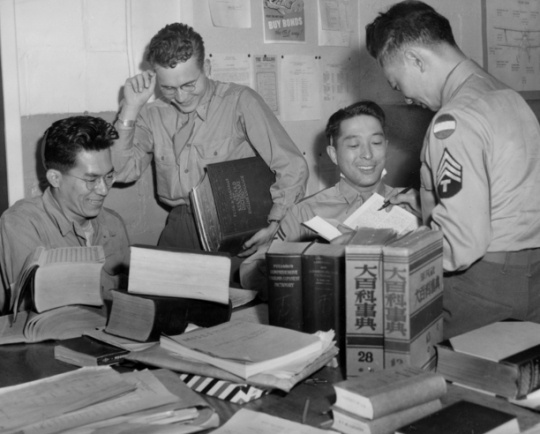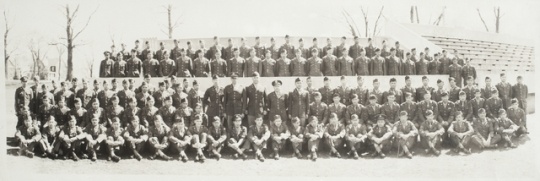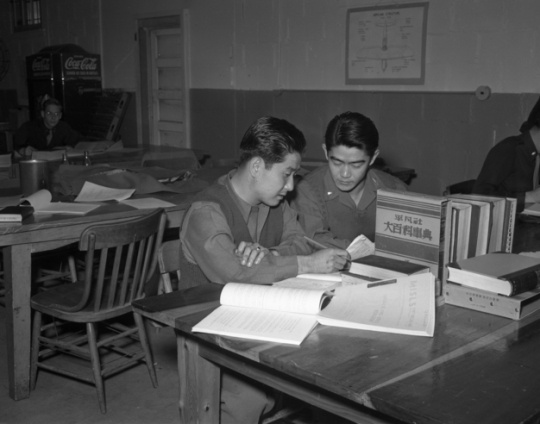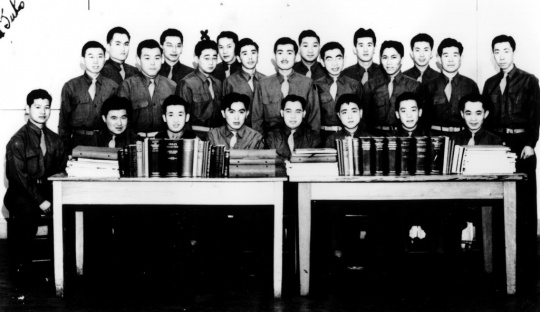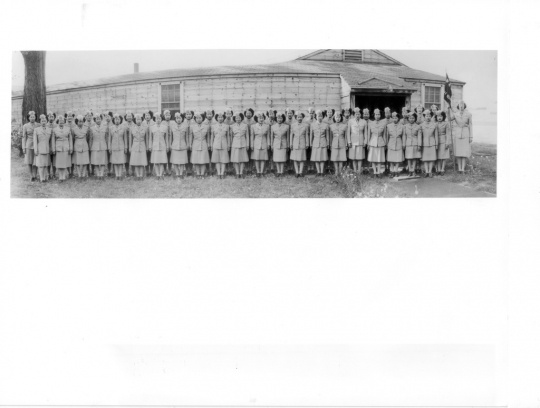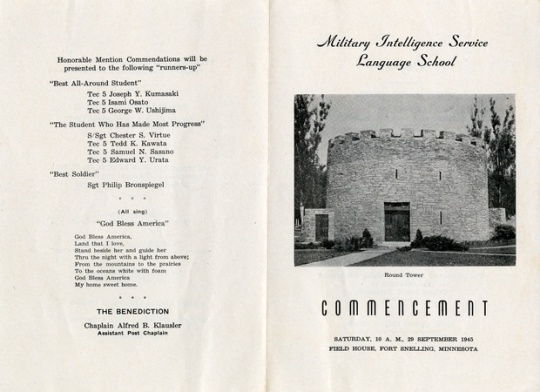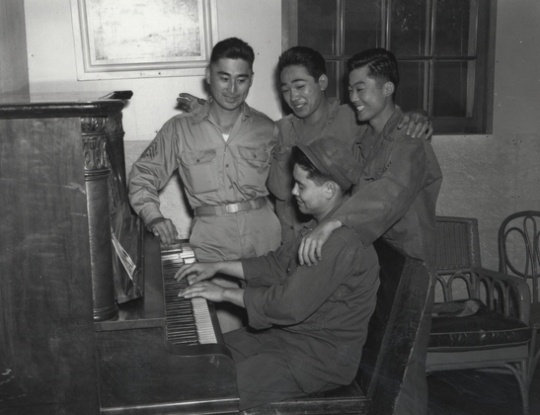Military Intelligence Service Language School (MISLS)
Bibliography
Ano, Masaharu. “Loyal Linguists: Nisei of World War II Learned Japanese in Minnesota.” Minnesota History 45, no. 7 (Fall 1977): 273–287.
http://collections.mnhs.org/MNHistoryMagazine/articles/45/v45i07p273-287.pdf
Densho Encyclopedia. Military Intelligence Language School.
http://encyclopedia.densho.org/Military_Intelligence_Service_Language_School/
Historic Fort Snelling. World War II (1941–1945).
http://www.historicfortsnelling.org/history/military-history/world-war-ii
Ichinokuchi, Tad, ed. John Aiso and the M.I.S.: Japanese-American Soldiers in the Military Intelligence Service, World War II. Los Angeles, CA: The Military Intelligence Service Club of Southern California, 1988.
Ishimaru, Stone S. Military Intelligence Service Language School, US Army, Fort Snelling, Minnesota. Los Angeles, CA: Tec Com Production, 1991.
P2700
Military Intelligence Service Language School historical material, 1943–1946
Manuscript Collection, Minnesota Historical Society, St. Paul
Description: Two photocopied reports and a set of orders for the Military Intelligence Service Language School.
Minnesota Historical Society, Library. Research Guides, Military Intelligence Service Language School at Fort Snelling.
http://libguides.mnhs.org/misls
Nakasone, Edwin M. ed. Japanese American Veterans of Minnesota. White Bear Lake, MN: j-Press Publishing, 2002.
Unsung Heroes: Military Intelligence Service; Past, Present, Future. Seattle, WA: Military Intelligence Northwest Association, 1996.
Chronology
April 15, 1941
November 1, 1941
February 19, 1942
May 1942
June 1, 1942
November 30, 1942
January 1944
August 1944
October 1944
May 1945
Septem-ber 2, 1945
November 19, 1945
November 29, 1945
1946
June 8, 1946
Bibliography
Ano, Masaharu. “Loyal Linguists: Nisei of World War II Learned Japanese in Minnesota.” Minnesota History 45, no. 7 (Fall 1977): 273–287.
http://collections.mnhs.org/MNHistoryMagazine/articles/45/v45i07p273-287.pdf
Densho Encyclopedia. Military Intelligence Language School.
http://encyclopedia.densho.org/Military_Intelligence_Service_Language_School/
Historic Fort Snelling. World War II (1941–1945).
http://www.historicfortsnelling.org/history/military-history/world-war-ii
Ichinokuchi, Tad, ed. John Aiso and the M.I.S.: Japanese-American Soldiers in the Military Intelligence Service, World War II. Los Angeles, CA: The Military Intelligence Service Club of Southern California, 1988.
Ishimaru, Stone S. Military Intelligence Service Language School, US Army, Fort Snelling, Minnesota. Los Angeles, CA: Tec Com Production, 1991.
P2700
Military Intelligence Service Language School historical material, 1943–1946
Manuscript Collection, Minnesota Historical Society, St. Paul
Description: Two photocopied reports and a set of orders for the Military Intelligence Service Language School.
Minnesota Historical Society, Library. Research Guides, Military Intelligence Service Language School at Fort Snelling.
http://libguides.mnhs.org/misls
Nakasone, Edwin M. ed. Japanese American Veterans of Minnesota. White Bear Lake, MN: j-Press Publishing, 2002.
Unsung Heroes: Military Intelligence Service; Past, Present, Future. Seattle, WA: Military Intelligence Northwest Association, 1996.












